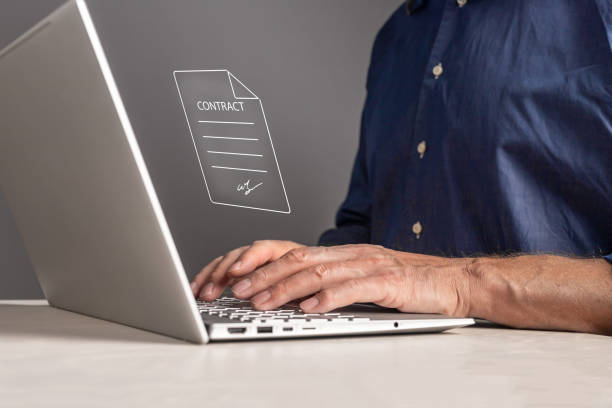Online document verification is revolutionizing the world of identity verification. Eliminating the need for in-person presence, this system helps people and businesses verify documents from any corner of the world.
What is document verification, actually? How does it happen? Document verification refers to the process of authenticating user or customer documents. OCR software is used to confirm the authenticity of original documents. This software extracts information from records and identifies them at a deeper level.
Why Do We Need Verification of Documents?
Identity theft is one of the significant problems in the online business sector. In the US, 47% of citizens are currently facing identity theft. Therefore, document verification solutions help identify customer identity through KYC compliance.
Online document verification system makes verifying documents easier, reducing the onboarding time for the business and financial sector. This automated system thus saves time for organizations and speeds up the efficiency to verify documents.
What Are the Identity Verification Documents?
These are some of the official documents that businesses can verify in the online document verification system:
- Passport
- ID Card
- Utility Bills
- Educational documents
- Employment documents
- Tax Bills
- Bank Statements
During KYC verification, business verification of documents by checking various document features such as stamps, fonts, holograms, and other security features to ensure validity.
How Does Document Verification Process Actually Work?
The process of document verification is a meticulous one that requires multiple steps to ensure the authenticity of an ID. These steps involve careful comparison with a set of databases. By following these steps to verify documents, we can ensure the highest level of accuracy and reliability in our verification process.
- Face Detection
Identity documents, for instance, identity cards and passports, are the two most critical documents for identity verification. The identity verification systems extract the image data and compare it with customer-provided photos for face detection and verification.
- Data Correlation
Official forms of identity verification have linked pieces of information on their front and back sides. The identity solutions correlate this data to ensure that the user ID is legitimate and hence verify the document.
- Document Scanning for Fraud Detection
To make the document verification system smooth and seamless, it is significant to have systems in place to scan ID documents, such as barcodes and ID numbers. To detect fake and forged documents, these systems can immediately identify watermarks and identify fraud.
- Database Checks
The purpose of verification systems is to verify documents by comparing their data with different databases. Document verification solutions often have access to national databases, so a scan of a national ID card can be verified through these databases. With access to various databases, these document verification service providers can verify the documents globally.
- ID Checks Through Live Images
In the world of advanced verification and biometric systems, image checks for cross-verification against selfies will authenticate the right user and hence prevent spoofing.
Machine Learning & Online Document Verification
Many problems with online document verification come from errors made during the scanning or authentication of the documents. However, machine learning is changing the game by improving online verification hence making it more precise and reliable to verify documents.
Machine learning supports online document solutions and OCR to identify fake credentials. Data scientists tend to train machine learning algorithms for identifying advanced forgeries. With advanced algorithms to verify documents, online systems can conveniently identify ID documents from any corner of the world.
Use of Digital Document Verification
The power of digital document verification is put to use by a variety of industries. Take a look at some of the use cases of this system.
- Opening of Accounts
Businesses have to verify the identity of their customers before opening their accounts. Financial institutions, the healthcare sector, and educational systems use this extensive identity documentation process to verify documents.
- KYC Compliance
KYC compliance is a necessity for all financial business sectors, including insurance companies, banks other institutions. The rise in identity theft necessitates this process to ensure hassle-free processes for both the users and organizations.
- Verification of Vendors
Businesses work with countless vendors and suppliers. It is crucial to verify documents and the identity of vendors during the onboarding process to guarantee that you are partnering with the appropriate individuals.
- Invoice Processing
Businesses deal with physical invoices, which can be a time-consuming task for both employees and businesses to maintain. Manual entry of invoice details not only consumes valuable time but also increases the chances of mistakes. With automated invoice processing systems, businesses can ensure accuracy and eliminate streamline the entire process.
Final Thoughts
The multi-step procedure to verify documents online ensures the legitimacy of an ID. The benefits are immense, ranging from improved security, streamlined operations, quicker onboarding, and the capability to authenticate documents globally. It plays a vital role in safeguarding against identity theft and facilitating efficient business practices across multiple sectors.
